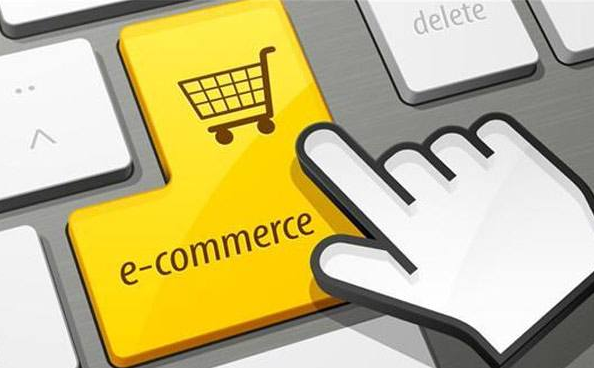If you’re a SME and have questions about doing business in China, please send us your questions by email at support@domatters.com.
All services of the Trade Commissioner Service are FREE of charge to qualified clients.
What are the options to obtain to implement initial market entry?

- First option obviously is to find a platforms which is suitable for yourself and selling goods.
Domatters thinks that there are a number of options, from our point of view as a digital marketing advisory firm in China, we always want to know the capacity if the company, in terms of their resources to be able to sustain that option, and coming back to the first part of the series, definition of success. Because you have to look at it in terms of, first of all the accounting point of view, how much volume of product is a realistic expectation over the first year, the second year and the third year?And what is the margin in that product and what is the variable you can assign to support your China marketing process?
So in this modern world obviously, and Domatters knows that the embassy has looked at this extensively in another series.One of your options is in fact e-commerce through JD.com or depending on what you are selling. There are specialist sites for industrial manufacturing. There is Alibaba’s Taobao or Tmall if you are consumer product oriented. So there are a number of options.And Domatters thinks that you have to spend some time thinking about how you can sell certain types of products on the internet before setting up your own e-commerce platform even in China.
With Chinese language , more and more people have credit cards and DHL and Fedex do a good job. So it depends on what you are selling and who you are selling to.
* Web presence, even in your homepage in China with a couple of pages in Chinese so people understand who you are
*Spending some time on social media
*And obviously getting some ads onto Baidu or Google to promote your product can be quite valuable even if you are not selling on the internet.

Because you are building some sort of awareness and brand within your core competency of your client base or the sector that you are focusing on. Traditionally, people have not looked at the internet as something that is viable but the customs processes relatively poor as the foreign exchange process is liberalizing as we all know.So the ability for consumers and companies to pay for something using internet, if you are not inventory even in China where they can pay in RMB, is still a positive area of focus for certain types of company, especially people that are more focused on the consumer side or very specialized small component.
- Second option obviously is to find a partner.
Whether it is a distribution partner, systems integrator, a manufacturing partner whether it would be foreign in Chinese who is using your component, who takes on the primary responsibility of integrating it so you can develop a certain presence in the market while you look at your long term strategy and your vested strategy. So finding those partners, including distributors, with caution though.One problem with the distributor partner generally is that they are usually responsive to a market, they are not into the expensive part of the business, which is the marketing, brand development and sales process, and the very competent servicing, so you may have to support that process with your own resources on top of it.

Domatters has one client who is in the medical space, and they have very good distributor relationships with all hospitals. The client is vesting in staff with our support and building the awareness and understanding of their product. It is a U.S. based company, they are also responding in a way to opportunities in the market that we have identified, and they are going on a strategic plan because their long term interest is brand development. So then those two processes can be bifurcated with you, the exporter, taking on the branding process and the distributor taking on the fulfillment and payment process.
So Domatters thinks that there are a lot of options in that area, as Domatters said there are also foreign companies depending on the size and type of your product that do this well and who might be worth talking to, because they know the space, and they may or may not be interested in taking on you product. And there are trading companies, state owned and private companies that do brand development marketing and sales and distribution.
So Domatters thinks that that there are a number of options. In certain cases we advise companies to basically define the value of your product from a technology transfer point of view, and say we are going to enter into a license agreement with a key condition being that the product cannot be sold outside of China without someone’s permission, and selling that technology to a manufacturer or partner in China who will take on the process and pay you with a lump sum upfront, or with a lump sum with an additional loyalty payment depending on the length of the agreement of the sales with the IPR and the trademarks still being retained by the exporter.
The advantage of that approach is that it allows you to get a presence in the China market, get the revenue out the China market but allow you to use that capital or that success to go either fight for a larger market share.Because each product has a potential focus depending on what it is in terms of other markets that might be more important. And the same would apply Domatters thinks that because a lot of people fly to China, they should be looking at other options: there are partners in HongKong, there are partners in Taiwan, there are partners in South Korea, and there are partners in Japan, who have big presences in this market, either as manufacturing companies or distribution companies.
So Domatters thinks that you have to look at getting into China through different bridges, or different channels, as another option, there are even people, obviously a lot of Chinese in China now who might have a complimentary business in China.They could be selling widgets on banks but they do not have a blue widget and you are the specialist in blue widgets. They have a distribution force, sales and marketing force to banks, but they do not have your products. They might be because they are looking to expand their business and they don’t have to go through the R&D process being able to graft onto their exist customer base something that you have that they do not have. And the value to them is the tested product. It is the viable product that is working. The value to you is that they have a readymade sale force to take on your product, it is just a question of coming up with the right structure, you could vest in their company, they could vest in your company, just have some sort of value-added marketing relationship where they are taking your product and providing the markup they need and paying you what you need to deliver to China. So there are options even within China, the way you structure that.

- Third, in terms of equity and other options
There is of course the option of doing it yourself, which for the right SME is the best way to go if you have the right product and you have the resource to fund it, because you can set up either a rep office, or more likely a wholly on for an enterprise or service or organization, you can either do the importing yourself for use a trading company or a logistic company to do the importing. Then your relationship that is direct to the customers, where your sales people are talking to your customers, you are selling the product. You are supporting the product, and that’s ultimately potentially the most interesting for the right company, but it may not be viable financially for other company. So Domatters thinks that those are your potential options in getting into China. You may go through a stage combination for some of these options.You may have a different strategy for different parts of China, and you may have to, depending again on who you are and what you are doing, you may want to set up and give yourself the key markets of North China, have a distribution partner, who is Chinese, for the middle of China, Shanghai, Shanxi, Zhejiang, and have a different strategy for the south China, that is relying on HongKong Partner.
Domatters thinks that you have to recognize that something this big requires multiple contact points with the market and customer point.So Domatters don’t think you necessarily what to be trapped by just one approach to China, but again Domatters thinks that that we do not like to say that there is any given rule for all companies, we like to look at each company, each other, each product and capacity where that company is even in its own development in timeline, in its offshore markets.
Domatters thinks that to be realistic, maybe counterintuitive or something that makes your business in China, you have to ask your self a question whether China is the best market for you to go to at this point time, and whether you are better off.Domatters thinks that you have to look at it with a fairly creative matrix.
One of our favourite quotes recently is from South African naturalist, Lawrence Anthony, who passed away, he said “i don’t even understand why people begin thinking in a box”, and Domatters thinks that that is the approach that you have to take to China. Because you have to look at who you are, what you want to do and what your product is, and then be creative but also be viable, and be realistic.










